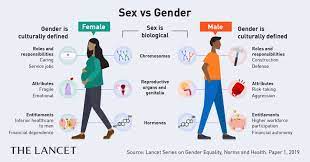Non Binary Disparities in Healthcare. 2022 Best

This paper explores transgender and Non Binary Disparities in Healthcare. This is a formal paper on the delivery of a health message. Students will take their research into the practice problem identified in the discussion forum portion, going deeper.
Non Binary Disparities in Healthcare.
This is a formal paper on the delivery of a health message. Students will take their research into the practice problem identified in the discussion forum portion, going deeper. Students will synthesize the information/research and formulate strategies to deliver a scientifically sound health message. Abstract (narrative; overview of the paper) Introduction & Background Introduce your identified population (group of focus, such as children, older adults, adolescents). Identify a priority health condition (health promotion/disease prevention issue identified in the Healthy People 2030 federal initiative to improve health), the one used in your discussion forums. https://youtu.be/rhiFLP4Gh-E
Non Binary Disparities in Healthcare.
Include supportive science, search the literature to understand the health problem and build this section, use.gov, .edu, or .org websites, such as Centers for Disease Control and Prevention (CDC) in this portion. Background: discuss/note underlying factors that contribute to the health promotion/disease prevention issue in your population of interest (background of the issue), include supportive science, and: Healthcare costs related to the issue, cost of hospitalization, cost to the greater society, as examples. Example: According to the National Institutes of Drug Abuse (NIDA) substance use costs the U.S. 600 billion dollars annually (n.d.).
Non Binary Disparities in Healthcare.
Morbidity and mortality rates. ****Example: According to the Centers for Disease Control and Prevention (CDC) the U.S. has lost nearly 841,000 lives to drug overdose since 1999 (2020). How the health promotion/disease prevention issue impacts the population selected, quality of life, as example. **** Example: According to the Centers for Disease Control and Prevention (CDC) adolescent opioid use increases risky behaviors, such as not wearing a condom or having multiple sexual partners, that may lead to sexually transmitted infections and unintended pregnancy (n.d.). Purpose Statement and Research Question(s) (guiding question of your inquiry)
Non Binary Disparities in Healthcare.
Literature support: Select at least two current (published within the last 5 years) peer-reviewed journal articles that support your strategies for ameliorating the health promotion/disease prevention issue. Using the journal articles selected discuss: Discuss/summarize each article, noting strengths of the research report/study/article such as participation rate, sample size, and sampling method as example. Note weaknesses, such as lack of adequate sample, low participation rate, and sampling method, as examples (refer to chapter 12 in Grove & Gray (2019) research text to help in appraising research studies and Chapter 13 in Grove & Gray (2019) for help appraising literature review, systematic review, meta-analysis, or meta-synthesis).
Non Binary Disparities in Healthcare.
Synthesize the findings, comparing and contrasting the articles to ameliorate the health promotion/disease prevention issue and strategies to promote health. Evidence Based Health Communication Development Plan: Using the selected population and the priority health issue and the findings from the literature to develop health promotion/disease prevention strategies. Using Level 2 Headers first section note: Describe the health message using supportive science. The guiding theory: Identify and describe a learning theory, principle, or health education model with which to use to guide your teaching project refer to Nies & McEwen (2019) chapter 8, pp. 125-132.
Non Binary Disparities in Healthcare.
Search the theory in the broad literature, describe the theoretical concepts, or building blocks of the theory, that make this theory applicable to your teaching plan, cite two studies that have used this theory to guide their studies*** Theories help us explain, predict, and explain a phenomenon. Be clear, note the theory, cite the source, and describe the concepts that make up the theory. Next section, using a Level 2 header for **each step of the **Framework for Developing Health Communication found in Nies & McEwen (2019) chapter 8, pp. 136-141. Stage 1: Planning and Strategy Development. Stage II: Developing and Pretesting Concepts, Messages, and Materials.
Additional Files







